Arch Daily |
- Maison à Colombages Refurbishment / 05AM Arquitectura
- The Quest / Strom Architects
- Markhouse / Drozdov & Partners
- Elathur House / PLAYGROUP Studio
- Nature-Based Public Space Promotes Native Biodiversity in Hong Kong
- Brooks + Scarpa Propose New $12 Million Park for Downtown Los Angeles
- OpyCo / YBYPY
- Learn How This Portuguese Project Was Inspired by Strong Winds and a Striking Landscape
- 4 Virtual Spaces in "Second Life" that Explore Alternatives in Religious Architecture
- École des Mines / Barré-Lambot Architects
- How Rebuilding Britain’s Houses of Parliament Helped Create Clean Air Laws
| Maison à Colombages Refurbishment / 05AM Arquitectura Posted: 29 Jan 2017 09:00 PM PST  © Adrià Goula © Adrià Goula
 © Adrià Goula © Adrià Goula From the architect. For the interior reform of this "Maison à Colombages" from the late 19th century, we selected the remarkable elements of the house so that the intervention can be adapted to them following the unity of the whole house to improve its functionality.  © Adrià Goula © Adrià Goula On the ground floor we removed part of the existing partition so we could connect the main living areas such as the living room, the dining room and the kitchen, achieving a concatenation of spaces until the garden. We also improve the functionality of the entry with the addition of a new built-in furniture that stores a wardrobe and a bathroom while separating the entrance from the kitchen.  © Adrià Goula © Adrià Goula On the first floor we followed the same criteria, identifying the characteristic elements that went overlooked over the past amendments, such as the magnificent existing alcoves, restoring their clarity and characteristic features. These two bedrooms will be renewed setting a contemporary renovation as well as improving its clearness and functionality.  Previous State - Ground Floor Plan Previous State - Ground Floor Plan  Project State - First Floor Plan Project State - First Floor Plan In the main bedroom, we re-placed the alcove next to the bathing area that incorporates the shower and the bath in a volume made of marble. As for the children's bedroom, the alcove follows the same symmetry of the original room, reaching the same definition on both bedrooms.  © Adrià Goula © Adrià Goula  © Adrià Goula © Adrià Goula  © Adrià Goula © Adrià Goula The renovation succeeded in revaluing the qualities of the original distribution, applying coherency as a whole and improving its clarity and functionality, as well as permitting flexibility and visual relationships between the spaces.  © Adrià Goula © Adrià Goula This posting includes an audio/video/photo media file: Download Now |
| Posted: 29 Jan 2017 07:00 PM PST  © Martin Gardner © Martin Gardner
 © Martin Gardner © Martin Gardner "The Quest" is a private house in Swanage (UK); it is a new-build home replacing an ageing bungalow that had been on the site since 1917.  © Martin Gardner © Martin Gardner The clients wanted a house for their retirement, but with a keen interest in design and a love of abstract and modern art, it needed to eschew the usual trappings of staid, retirement home design.  © Martin Gardner © Martin Gardner The site is heavily wooded and sloping, enjoying a beautiful southerly aspect with a view over the Durlston Country Park.  Site Plan Site Plan Early on, we established the advantages of a single-storey building; it would suit the retired clients' future needs and the needs of their disabled daughter, give an elegant solution to the steeply sloped site and allow a simple arrangement of spaces. At the same time, the design reduces the visual impact from across the valley when looking back towards the house, and helped the scheme from a planning point of view.  © Martin Gardner © Martin Gardner The sloping site - with protected mature trees - very much dictated the positioning of the dwelling. Access is via the front of the property to the South, so we made use of a retaining wall faced in local Purbeck stone, to define different levels and visually mask the vehicular route, maintaining a clear view from the living spaces across the valley.  © Martin Gardner © Martin Gardner The house cantilevers over the retaining wall to deal with the level changes and views, and creates a sheltered undercroft parking area. The large cantilever has been achieved through two concrete planes: the floor and roof acting together like a space beam. The concrete structure is then in-filled with simple timber drylining, leaving the concrete frame visible externally.  © Martin Gardner © Martin Gardner Internally, a large open-plan kitchen-dining-living area occupies the centre of the plan, with a covered terrace spanning its length and giving a sheltered outdoor area overlooking the Southern views. To the Eastern end of the house sits the guest accommodation and studies, with the master suite sitting within the cantilevered Western end of the house.  Elevations Elevations A simple interior palette of Purbeck stone flooring, a concrete hearth and engineered timber flooring, provide echoes of the external materials - waterproof concrete slabs and untreated larch cladding.  © Martin Gardner © Martin Gardner The house exemplifies our belief that simplicity and honesty of construction underlie good design. The initial concept and design drivers are instantly recognisable in the building, and we worked to retain this clarity of intent without adding anything unnecessary to the building. We think carefully about how we build our buildings and work closely with our engineers to ensure an architecture founded in such basic things such as structure, details, materials and order.  © Martin Gardner © Martin Gardner This posting includes an audio/video/photo media file: Download Now |
| Markhouse / Drozdov & Partners Posted: 29 Jan 2017 06:00 PM PST  © Andrey Avdeenko © Andrey Avdeenko
 © Andrey Avdeenko © Andrey Avdeenko From the architect. Markhouse is located in the area which has recently become home for a peculiar sort of micro-community made of people united by friendly or family relationships. What is more, they have organized a number of places for common use here, such as a lounge-club, a parking lot and paths between the plots.  © Andrey Avdeenko © Andrey Avdeenko  Floor Plan Floor Plan  © Andrey Avdeenko © Andrey Avdeenko The house, in fact, consists of two independent houses with a garage shared by several families. The major challenge was to ensure the western exposure of the house to the gardenin terms of hot summer weather. There was also a need to find a compromise between intimacy and collectiveness.  © Andrey Avdeenko © Andrey Avdeenko All the daytime functions are united within one single volume of the ground floor with a common empty space created by the courtyard and the strip of glazing under the levitating volume of the upper floor with bedrooms. This helped to integrate the house into the garden space, while protecting the inner premises from western sunrays. The heart of the house is a transparent room for work and hobbies, which offers a view over the whole estate, as if from a captain's bridge.  © Andrey Avdeenko © Andrey Avdeenko
 © Andrey Avdeenko © Andrey Avdeenko Product Description. The unique feature of the project is the use of recycled second-hand bricks reclaimed from demolished buildings. This helped to cut down the cost of construction and establish the identity of the house.  © Andrey Avdeenko © Andrey Avdeenko This posting includes an audio/video/photo media file: Download Now |
| Elathur House / PLAYGROUP Studio Posted: 29 Jan 2017 12:00 PM PST  © Esha Daftari © Esha Daftari
 © Esha Daftari © Esha Daftari From the architect. The primary challenge was to retain an existing house on the site and build a complete new structure over it while retaining the basic functionality of the original structure. The new building was designed on a completely distinct set of circular columns which were placed strategically to avoid the existing walls and foundations. The new structure, aligned at an angle, floats over the lower structure. Roof of the existing structure was demolished and the space between the new and old structure was sealed with continuous frameless glass panes, maintaining the individuality of the two structures. The old structure was stripped off its plaster and the original large laterite stones revealed.  © Esha Daftari © Esha Daftari  Diagram Diagram  © Esha Daftari © Esha Daftari The site being very close to the beach at Elathur near Calicut, the intention was to make a robust house which is able to withstand the salty sea breeze and heavy monsoons. Concrete sloping roof, being the most resistant to corrosive properties of the breeze, was used to cover the entire structure. The concrete roof, being aware of it being 'non-wooden', it was free to tilt on its axis thus opening up the house towards the sea and lowering itself towards the rear side.  © Esha Daftari © Esha Daftari The slab was designed with strategically located upturned beams to maintain a flat slab at the bottom in response to the irregularly placed circular columns. The slabs have been finished with a mix of red and black wax hand rubbed on the cement plaster. The plastered surfaces of the stone and plaster have been sealed with a unique locally developed Ayurvedic medicinal extract called 'Vajrapasha'. This provides a slight sheen to these surfaces while revealing its inherent colour.  © Esha Daftari © Esha Daftari  Section Section  © Esha Daftari © Esha Daftari This posting includes an audio/video/photo media file: Download Now |
| Nature-Based Public Space Promotes Native Biodiversity in Hong Kong Posted: 29 Jan 2017 08:00 AM PST .jpg?1485318014) © Gustafson Porter + Bowman © Gustafson Porter + Bowman Gustafson Porter + Bowman has unveiled plans for Taikoo Place, a new public space for Hong Kong that will include lush native vegetation and sculptural water features. Encompassing 69,000 square feet, the landscape project will feature a variety of spaces, from small, intimate areas for conversation, to larger open areas suitable for special events like concerts and outdoor markets. .jpg?1485317643) © Gustafson Porter + Bowman © Gustafson Porter + Bowman
.jpg?1485453705) © Gustafson Porter + Bowman © Gustafson Porter + Bowman Through a dense system of tropical plants—including 70 trees—framed by sculpted stonework, the space aims to foster a refined and calm atmosphere. This stonework is centered on large bands of brown and white granite, which will run through the site, and into the surrounding streetscape and northern building lobby of One Taikoo Place.  © Kathryn Gustafson for Gustafson Porter + Bowman © Kathryn Gustafson for Gustafson Porter + Bowman  © Kathryn Gustafson for Gustafson Porter + Bowman © Kathryn Gustafson for Gustafson Porter + Bowman In order to promote biodiversity and raise awareness for Hong Kong's culturally significant and protected Fung Shui woodlands, 53 of the tree species utilized will be native species. The redevelopment of Taikoo Place will additionally include two office towers and an elevated walkway. The entire project is expected to be completed in 2021.
News via: Gustafson Porter + Bowman. This posting includes an audio/video/photo media file: Download Now |
| Brooks + Scarpa Propose New $12 Million Park for Downtown Los Angeles Posted: 29 Jan 2017 06:00 AM PST  © Brooks + Scarpa © Brooks + Scarpa Los Angeles-based practice Brooks + Scarpa has proposed a design for FAB Park, a new $12 million public park situated at First and Broadway in Downtown LA. The FAB (First and Broadway) Civic Center Park aims to capitalize on the city's diverse character and encourages strong communal activity among members of the public, through the inclusion of unique spaces for food, art and socializing.  © Brooks + Scarpa © Brooks + Scarpa  © Brooks + Scarpa © Brooks + Scarpa As part of LA's "50 Parks Initiative", the City's Department of Parks and Recreation bought the 1.96-acre site from the state in 2013, which was allocated towards the development of a new park for the city. The remaining 13-storey office building and accompanying 2-level underground parking required considerable demolition, which was completed in 2014.  © Brooks + Scarpa © Brooks + Scarpa  © Brooks + Scarpa © Brooks + Scarpa According to Brooks + Scarpa, "the city has a unique opportunity to design and construct an iconic park project in the Los Angeles Civic Center, that will augment the adjacent Grand Park, incorporate uses that bring life to the area (such as restaurant and public art installation)."  © Brooks + Scarpa © Brooks + Scarpa  © Brooks + Scarpa © Brooks + Scarpa The architects also hope to prompt public discourse in regards to spatial usage and innovative design strategies, in order to influence the park's further evolution into a unique urban setting.  © Brooks + Scarpa © Brooks + Scarpa Of the submissions to design LA's new iconic public space, this FAB Park proposal by Mia Lehrer + Associates (MLA) with partners OMA and IDEO, was selected as the winning proposal, to be opened to the public in 2019. News via: Brooks + Scarpa. OMA, MLA, and IDEO Selected to Design New Park for Downtown Los Angeles This posting includes an audio/video/photo media file: Download Now |
| Posted: 29 Jan 2017 05:00 AM PST  © Pedro Vannucchi © Pedro Vannucchi
 © Pedro Vannucchi © Pedro Vannucchi  © Pedro Vannucchi © Pedro Vannucchi From the architect. The project reflects the irreverence of the site – the little room, all decorated with wood blades and red color seeks to align the esthetics and functionality.  © Pedro Vannucchi © Pedro Vannucchi  Floor Plan Floor Plan  © Pedro Vannucchi © Pedro Vannucchi So the house can change according to the day and need: small benches support extend to the street, in the restaurant area the tables can be individual or collective, there is a counter to eat in the kitchen.  Sketch Sketch The space is fully adaptable to cooking classes, customized dinners, themed banquets, photo studio, privet events or even a laboratory. Another idea is that no matter where the customer is, he can see the kitchen in action. Every detail is important!  © Pedro Vannucchi © Pedro Vannucchi  © Pedro Vannucchi © Pedro Vannucchi This posting includes an audio/video/photo media file: Download Now |
| Learn How This Portuguese Project Was Inspired by Strong Winds and a Striking Landscape Posted: 29 Jan 2017 04:00 AM PST  © Damião Santos © Damião Santos This article is part of our new series "Material in Focus", where we ask architects to share with us their creative process through the choice of materials that define important parts of the construction of their buildings. This station and command post located in the Serra do Alvão, Portugal functions as a technical building supporting the wind farm. Surrounded by a unique landscape with beautiful views of the valley, the place is known for being isolated and home to a rather hostile climate, exposed to strong winds and extreme temperatures. We talked with architects Ricardo and Sofia Senos of the M2.SENOS studio to learn more about their material choices and the challenges of the project. What were the main materials you used for this project? M2.SENOS: For the exterior, we used 20x10 granite stones, pine wood, and painted iron plates. The exterior gate was painted iron rod. The covering was made of charcoal colored sandwich panels and thermal bricks.  © Damião Santos © Damião Santos What were your main sources of inspiration and influence when you were choosing the materials used in the project? M2.SENOS: The geological environment of the place was a great source of inspiration for this project: granite soil, made up of large rock formations, highlighting the texture marked by time. The shepherds in the area have already been influenced by this presence, building their small granite shelters to be impenetrable and monolithic.  © Damião Santos © Damião Santos Describe how decisions on materials influenced the design of the project. M2.SENOS: The project had two particularities: it's very technical and involves high levels of safety, but is almost completely self-managed (abandoned), in a majestic but inhospitable place, subject to very adverse climatic conditions.  © Damião Santos © Damião Santos What were the advantages that this material offered for the construction of the project? M2.SENOS: A strong, timeless solution capable of resisting vandalism, ensuring the protection of the electrical equipment contained inside, with an ability to age, that helps to integrate the building with the surrounding space.  © Damião Santos © Damião Santos Did the choice of materials impose any kind of challenges to the project? M2.SENOS: In designing the project, the choice of materials was already very clear or even essential. So formation process was almost natural. However, there were some budgetary constraints. By choosing higher cost materials, we had to find solutions that would mitigate these costs. So we found a way to use smaller cuts of granite which ended up being cheaper and less complicated. Also, the gate is made up of iron rods. We believe that constraints encourage creativity and we enjoy finding these types of solutions.  © Damião Santos © Damião Santos Did you ever consider the possibility of other materials for the project? If so, how would that have changed the project? M2.SENOS: To this day we are not totally sure about the exterior. However, it seemed to us as well as to the promoters, the best option in terms of heating, without raising costs and being able to spend more on the other elements. We thought about possibly doing the roof in stone, but technically it was much more demanding, including structurally.  © Damião Santos © Damião Santos How did you research suppliers and builders suitable for materials used in the project? M2.SENOS: In this case, most of the materials used were either very technical (interior) or local. So it was a relatively simple process to use small industries from the region.  © Damião Santos © Damião Santos Check out the full project below: This posting includes an audio/video/photo media file: Download Now |
| 4 Virtual Spaces in "Second Life" that Explore Alternatives in Religious Architecture Posted: 29 Jan 2017 03:00 AM PST  Screenshots via Second Life Screenshots via Second Life If you've heard of Second Life, the 2000s-era web-based online world with millions of loyal "residents" who populated it with personal avatars, you're likely to think it has become irrelevant or obsolete. But at the peak of its popularity, the site received a lot of attention for providing users with a potentially dangerous escape from reality—one so powerful that it was not unheard of to leave real jobs, friends, and families for those found within the site. Second Life is the ultimate democratizer in space making. The vast web of locations in the site's virtual world, called sims, are almost completely user-generated. For as little as $75 a month, anyone with an internet connection and basic CAD skills can create, upload, and maintain whatever place they dream up. Sure, sometimes this "great equalizer" spits out such venues as SeDucTions and Sinners Burlesque, but more often than not, builders have responded to the complex opportunities and challenges presented by their unique situation with innovative design solutions. One place to observe this is in the site's many spiritual sims, in which religious architecture often responds to the displacement of religious authority in the digital world, since a lack of official (sanctioned) ties to tradition offers a designer more agency than in the real world. Read on to discover four cases that carve out a space for spirituality in Second Life and reveal some of what works—and doesn't—in today's virtual sacred architecture. Hikari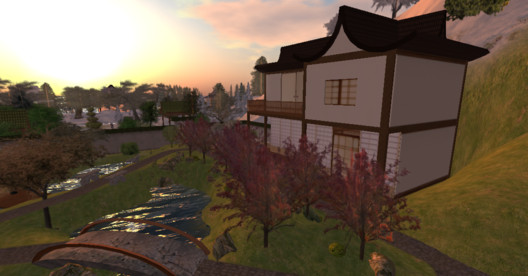 Screenshot of Hikari via Second Life Screenshot of Hikari via Second Life Hikari is a Buddhist sim filled with elaborate gardens, private homes, and small meditation pavilions. Its designer, Sylvio Kurze, has a professional background in 3D modeling, but no formal religious or architectural education. He sought inspiration for his zen-esque Buddhist structures where any of us would: Google.  Screenshot of Hikari via Second Life Screenshot of Hikari via Second Life Kurze also bases the gardens off of his own experiences as a hobbyist landscaper. As such, Hikari sits in its own architectural category outside of conventional zen. It is a visual and spatial manifestation of what Buddhism means to the sim's builder, and does not require the permission of a monastic order to exist. 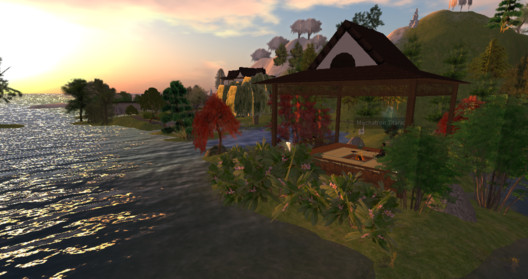 Screenshot of Hikari via Second Life Screenshot of Hikari via Second Life Koinonia Screenshot of Koinonia via Second Life Screenshot of Koinonia via Second Life Koinonia was one of the first Christian churches to arrive in Second Life. In its description, Koinonia promotes itself as a progressive, LGBTQ-friendly Christian community. This mission of inclusivity is directly reflected in its unorthodox design. In the absence of weather, the cathedral has no door and is wrapped in large windows to let in the digital sun and stars.  Screenshot of Koinonia via Second Life Screenshot of Koinonia via Second Life Rather than pews arranged to direct attention toward a single focal point, a circle of cushions and chairs encourages openness and conversation. Minimal ornamentation and furniture place social interaction and relationship building as the main objectives, rather than worship of iconography or lavish architecture meant to invoke the presence of a deity. Koinonia seems to knowingly detach itself from any particular corresponding time or place in reality, unencumbered by any one stylistic motif.  Screenshot of Koinonia via Second Life Screenshot of Koinonia via Second Life Unitarian Universalism Screenshot of Unitarian Universalism via Second Life Screenshot of Unitarian Universalism via Second Life Unitarian Universalism is another spiritual sim that stems from liberal Christian ideology. Real-world Unitarian Universalist buildings often riff off of Presbyterian architectural styles and look like your typical small town chapel. They may also utilize more of a mid-century modern approach with large windows and angled roofs. 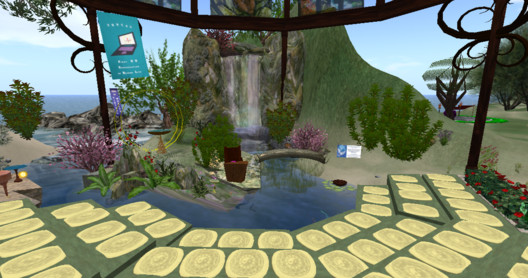 Screenshot of Unitarian Universalism via Second Life Screenshot of Unitarian Universalism via Second Life The Second Life sim deviates from this convention completely, providing a semi-circular arrangement of cushions in a lush outdoor garden and waterfall. An airy dome structure hangs high over the setup, framing services in stained glass. The Unitarian Universalism sim takes advantage not only of its ability to disregard the tradition set by physical Unitarian spaces, but also the opportunity to sit at the foot of a waterfall without getting splashed that only VR can afford its users.  Screenshot of Unitarian Universalism via Second Life Screenshot of Unitarian Universalism via Second Life Coptic Orthodox Church in Egypt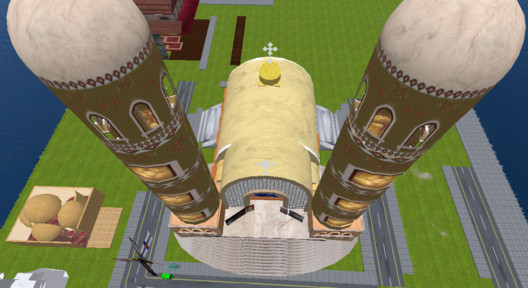 Screenshot of the Coptic Orthodox Church in Egypt via Second Life Screenshot of the Coptic Orthodox Church in Egypt via Second Life Unlike the previous three sims, the Coptic Orthodox Church in Egypt relies almost completely on architectural precedent. Although its campus fills the entirety of a small square island, by incorporating Egypt in its name, the Coptic Orthodox Church establishes an intended audience before users even teleport inside. The main building is a detailed emulation of physical coptic churches: two crucifix-topped towers rise over a wide, arched nave. Inside, the linear organization of the pews and wall separating the altar and apse work to preserve the authority of the church as they direct avatars through space. 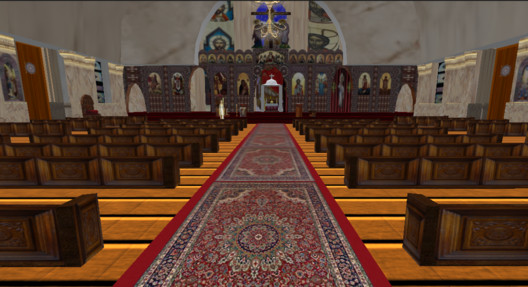 Screenshot of the Coptic Orthodox Church in Egypt via Second Life Screenshot of the Coptic Orthodox Church in Egypt via Second Life The most significant difference between this sim and its real world counterparts is scale: massive wooden doors dwarf the avatars, and it is impossible to fit the entire building into the viewport. Perhaps the designer has taken advantage of free and infinite virtual materials to make the church more resplendent, or more likely, the space was designed by a novice 3D modeler who forgot to take avatar height into account during the design process. 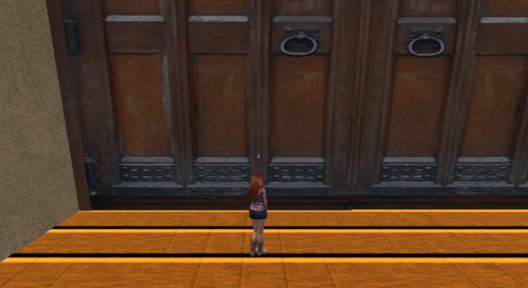 Screenshot of the Coptic Orthodox Church in Egypt via Second Life Screenshot of the Coptic Orthodox Church in Egypt via Second Life This posting includes an audio/video/photo media file: Download Now |
| École des Mines / Barré-Lambot Architects Posted: 29 Jan 2017 01:00 AM PST  © Philippe Ruault © Philippe Ruault
 © Philippe Ruault © Philippe Ruault  Site Plan Site Plan From the architect. How does one build an extension without compromising the architectural layout that was initially developed on the site? A "belvedere/school" overlooking the Erdre Valley!  © Philippe Ruault © Philippe Ruault Lining the landscape up with the horizon through this extension was made possible through a simple set-up: two platforms, one along the lower garden, and one flush with the upper garden, both opened by a patio embedded in the ground, revealing a 5.5 metre (18 ft.) gradient running north-south along the building's foundations.  © Philippe Ruault © Philippe Ruault Given its insertion into the ground itself, this installation preserves the existing view of the landscape from Building H. It avoids all bothersome projected shadows or masking effects onto the faculty apartments (Building I) located to the southeast, just below the site of this building. The abundant natural light in classrooms, laboratories and offices, is controlled by the installation of micro-perforated and motorized vents in the south and west façades. The installation of prestressed flooring guarantees crossing without the need for support beams along the width of each of the building's wings. This confirmed project takes up its position on the site by respecting and underlining the architectural principles of the existing building.  © Philippe Ruault © Philippe Ruault Product Description: We use materials in limited numbers and for their intrinsic quality. The solar shading system were specially developed by our agency in collaboration with the RENSON company.  Section Section This posting includes an audio/video/photo media file: Download Now |
| How Rebuilding Britain’s Houses of Parliament Helped Create Clean Air Laws Posted: 29 Jan 2017 12:00 AM PST  The British Houses of Parliament. Image © Flickr user megantrace. Licensed under CC BY-NC 2.0 The British Houses of Parliament. Image © Flickr user megantrace. Licensed under CC BY-NC 2.0 MIT has published new research revealing how the reconstruction of the British Houses of Parliament paved the way for legislation to tackle air pollution in Victorian London. Through original archival work into the 1840-1870 reconstruction, MIT architectural historian Timothy Hyde has revealed that work on the Parliament building was so hindered by air pollution that the British government ordered an inquiry into the effects of the atmosphere on new buildings.  © Flickr user daveograve. Licensed under CC BY-NC 2.0. Image © Flickr user daveograve. Licensed under CC BY-NC 2.0. Image Britain's medieval Parliament was destroyed by a fire in 1834. In its place, construction of the famous Gothic Revival building by Charles Barry began in 1840. However, the notorious soot, smoke, and grime chocking London's air soon hampered the construction process, with new limestone corroding even as it was being built. Given the high-profile nature of the building in question, public attention was drawn to the effects of air pollution on new buildings. By 1875, Britain had passed a Public Health Act with articles specifically relating to smoke prevention.  Westminster Bridge, 1903. Image © Flickr user nedgusnod2. Licensed under CC BY-NC 2.0 Westminster Bridge, 1903. Image © Flickr user nedgusnod2. Licensed under CC BY-NC 2.0
 New limestone corroded while the building was still being constructed. Image © Flickr user pahudson. Licensed under CC BY 2.0 New limestone corroded while the building was still being constructed. Image © Flickr user pahudson. Licensed under CC BY 2.0 MIT's historical research sits within a familiar modern context, with air pollution in London once again attracting public attention, and the Houses of Parliament once again in urgent need of restoration, attracting radical proposals.  London still suffers from air pollution. Image © Flickr user stumayhew. Licensed under CC BY-NC-ND 2.0 London still suffers from air pollution. Image © Flickr user stumayhew. Licensed under CC BY-NC-ND 2.0 Learn more about the link between the reconstruction of the Houses of Parliament and the introduction of clean-air laws by reading the full article here. News via: MIT School of Architecture and Planning. This posting includes an audio/video/photo media file: Download Now |
| You are subscribed to email updates from ArchDaily. To stop receiving these emails, you may unsubscribe now. | Email delivery powered by Google |
| Google Inc., 1600 Amphitheatre Parkway, Mountain View, CA 94043, United States | |

















.jpg?1485317643)
_and_public_space_below_-_opyright_Gustafson_Porter___Bowman.jpg?1485320550)
.jpg?1485453705)
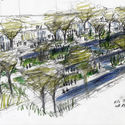









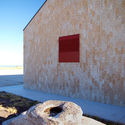
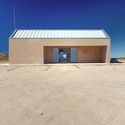
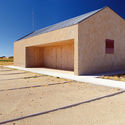








Nema komentara:
Objavi komentar